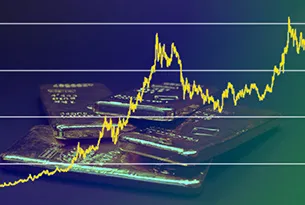Limit-up and limit-down rules in the futures markets can greatly affect any trading strategy, explains Hubert Senters, who tells how to adjust in order to stay safe and profitable.
For many traders looking at the agricultural markets with corn or wheat or some of the others, what do you have to know about the limit down and limit-up portion of that market?
Our guest today is Hubert Senters to talk about that. So Hubert, first of all, what does it mean by “limit up” or “limit down?”
Limit-up and limit-down moves happen in most of the agricultural markets like corn, soybeans, and wheat. All it means is that market can only move that amount before it can move no higher or no lower.
So let’s take, for example, corn. Corn can move 30 cents a day and then it stops; it won’t go to 31 cents either up or down. It does not lock there, but what happens is once the price action gets to that 30-cent limit, it tends to stop trading just because a lot of people who are either long or short will just hold it for the next day with the anticipation that it will actually gap up or gap down in their situation.
The weird thing about limits that you have to keep in the back of your mind is, for corn, it’s 30, 45, and 70. So, 30 cents for the first day, and then tomorrow, lets say we went limit up today, 30 cents up in corn. Tomorrow, it has to hit a limit of 45 cents. If it doesn’t close up 45 cents, then it goes back to 30.
So the three numbers that you need to know are 30, 45, and 70 on corn.
If I’m in that trade and that happens, I can get out of it, but I can get out of it at that highest price or lowest price?
It depends, like there are a couple of trades that you can do. Let’s say you’re short corn and it goes limit down 35 cents. That’s a good thing. You don’t want to buy a limit-down move when it’s down 30 cents. Just because there are certain people in that move that won’t want to sell it and won’t want to buy it if you’re on the opposite side of the direction.
It doesn’t mean you can’t; it just means that you have increased odds of being stuck in that position.
What you can do if you’re long corn and it goes limit up 30 cents, start looking at soybeans and wheat because they could potentially also go limit up.
NEXT: Key Factors for Traders to Consider
|pagebreak|Now is this a seasonal thing where this will happen more often at certain times of the year?
I don’t know if it has seasonality to it; it’s pretty random when it happens, but when it does happen, if you have a one- or two-day limit-up or limit-down move, it’s usually the first signal of a trend change and it starts moving in the opposite direction.
This is obviously done to avoid hysteria or markets completely bottoming out without some kind of safety net.
Exactly, it’s almost like the indexes, where you’ve got the circuit breakers in effect, and basically, they don’t want it where you can run corn up two bucks a day.
Is this kind of built-in risk, baiting risk for me; should I think of it like that?
It could be a baiting risk, or if you don’t know what you’re doing, you could get your head ripped off with the risk. If you get stuck in a limit-up move and let’s say you’re short, there’s not going to be a whole lot of people that help you out of that move. You just need to have a little caution there.
Alright, and then finally, I know you’re a technical trader, but do you look at the fundamentals, especially when you’re talking about agriculturals where we factor in planting, weather, that sort of thing?
I don’t look so much at the fundamentals. I usually look at most of the technicals, and we’ll see “Alright there’s a population boom, we’re probably going to need more agriculture and commodities” and stuff like that.
Over the long term, commodities are probably going to rise, but on an intraday basis, I don’t really care. I will trade them whichever way they go.
Related Reading:




































